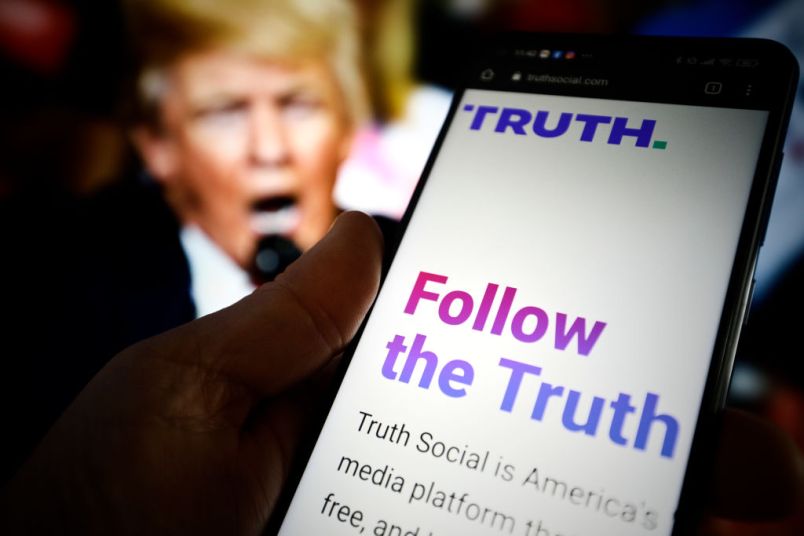Jack Goldsmith has a lengthy discussion at the Lawfare Blog of whether Attorney General Garland was right to seek a search warrant to search and seize records from ex-President Trump’s Florida estate. It is a good discussion, though one might say the very brazenness of Trump’s indifference to the law has a way of rendering precious or quaint any serious and deliberate discussion of potential consequences. Most of Goldsmith’s discussion can be boiled down to this: it all depends on what’s in the documents, just how secret they needed to be and what Trump was planning to do with them. And it’s hard to disagree with that — of course it does. But Goldsmith’s analysis is missing something.
Goldsmith is very big on the idea that it is dangerous for a President’s administration to pursue criminal charges against a predecessor. It’s a longstanding concern of his. And it’s one I agree with, strongly. Prosecuting a presidential predecessor, even when there is legitimate reason to do so, creates the risk, perhaps even the inevitability, of triggering a tit for tat cycle of prosecutions in which each President is either prosecuted or placed under legal jeopardy after surrendering power.
I cannot stress enough how much I agree with this concern. It’s always governed my thinking on these questions, until Trump.
Not every crime or infraction needs to be prosecuted. Especially with someone as consequential as a former President there are many considerations beyond the mere ability to secure a conviction. What’s lacking in Goldsmith’s discussion is any real grappling with the opposite side of the equation. For all the very real dangers of crossing the boundary of prosecuting a former President, surely there is a comparable line on the other side of the equation. That is the line past which a President’s lawlessness becomes so pervasive, persistent and dangerous that the risks of acting are outweighed by those of failing to do so. It is less a matter of principle than public safety.
Looking back over the last seven years it’s very hard to argue that Trump hasn’t crossed that threshold. Indeed, he’s blown right through it. Quite apart from potentially conspiring with a foreign power, the Mueller Report contains ample and convincing evidence of obstruction of justice. Trump’s first impeachment included quite plausible statutory crimes. Then there’s the multifaceted and multi-jurisdictional plot to corrupt and then overturn the 2020 election all culminating in the violent assault on the seat of government. Now we have what appears to be a concerted and deliberate effort to maintain possession not only of government property but significant state secrets for reasons unknown. As recently as this summer, there is evidence that Trump personally contacted potential witnesses against him and tried to ensure their silence with a mix of inducements and threats.
The precise architecture of the federal government creates a complicated, problematic but ultimately convincing argument that a sitting President should not and really cannot face criminal prosecution while in office. But if that prohibition in practice extends after the President has left office the whole legal-political calculus and rationale collapses. That is all the more the case if the law breaking is on-going. It would be one thing if Trump had ceased his law breaking and retired from political life. But clearly neither is the case. Even with everything I’ve said here I find myself thinking that the best outcome for the country would be a sort of deterrent enforcement of the law that stopped short of incarcerating a former head of state. But does anyone think such a pulled-punch deterrent would actually deter the man?
If a prosecutor were simply looking for criminal statutes to plausibly, if imprudently, wrap around Trump’s documented actions he or she could certainly come up with scores of potential charges. That is not the proper standard. The question is whether Trump’s lawlessness is so pervasive and persistent that granting him what amounts to perpetual immunity for past and future actions represents a threat to the safety of the republic greater than the real dangers of holding him to account. I think it does. Indeed, in the year since January 6th I’ve spoken to many sensible and cautious people who told me they went from thinking the dangers of prosecution were too high to thinking it was too dangerous not to hold Trump to legal account.
I can imagine contrary arguments. I’m sure Goldsmith has them. But the discussion is incomplete if we’re arguing only one side of the equation. Trump’s violations of law are pervasive. They directly threaten the state itself. As important as anything they continue and show no signs of stopping. The dangers of what amounts to a grant of impunity are profound and need to be discussed explicitly.






